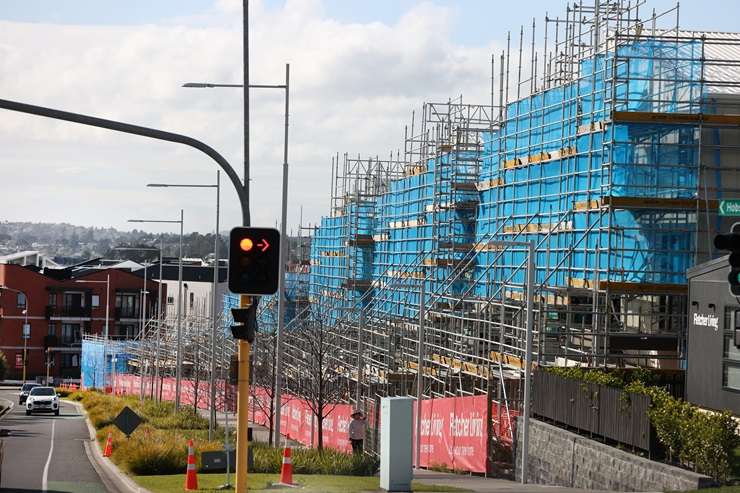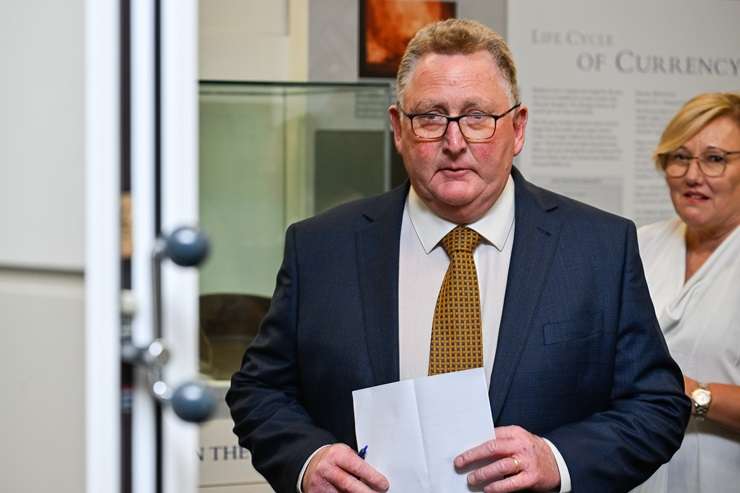New Zealanders are now reaping the financial pain of decades of underinvestment by successive governments as the Reserve Bank warned yesterday that interest rates may stay higher for longer to tackle inflation.
While the Official Cash Rate (OCR) remains unchanged at 5.5%, Reserve Bank Governor Adrian Orr said higher rents, insurance costs, council rates, and price inflation on domestic services posed a risk to inflation expectations, pouring cold water on the idea of interest rate cuts anytime soon.
According to its May Monetary Policy Statement, the Reserve Bank may not cut the OCR until 2025. The latest Consumers Price Index saw inflation fall to 4%, still above the desired 1% to 3% target range.
Discover more:
Start your property search
- ‘Dumb move’: Buyers call mortgage brokers in shock after Government scraps first home grant
- Tony Alexander: In the most dangerous part of the cycle - time to call it quits?
- Countdown to bright-line: Stressed landlords urged to 'beat the rush' and list now
Kiwibank chief economist Jarrod Kerr told OneRoof the Reserve Bank had smashed the sensitive parts of New Zealand’s economy with its OCR hikes, but the less sensitive areas, outlined by Orr, were still on the rise and that was the result of long-term underinvestment as well as climate change threats.
Kerr said government inaction over past few decades had resulted in the financial pain Kiwis were feeling now.
New Zealand had kicked the can down the road on some of the country’s biggest issues, from the infrastructure deficit to managing an ageing population, and it was showing, Kerr said.
“Unfortunately, we’ve done that for decades, and it’s led to more inflation [in those harder-to-impact sectors of the economy] than would otherwise have been the case and a less productive economy than would otherwise have been the case.”
He said if New Zealand had invested enough to maintain its assets and build the infrastructure needed, it wouldn’t have the problem of ailing infrastructure, which councils are now trying to fix by increasing rates. In addition there wouldn’t be the fluctuations in house prices and rents because the housing market would be adequately supplied.

Kiwibank chief economist Jarrod Kerr: "Businesses and households are telling us that they're struggling.” Photo / Supplied

Homes under construction in Auckland. New housing supply has been flagged as a problem. Photo / Fiona Goodall
“One of the big drivers of overall inflation figure is rents. They have been propelled by underinvestment in housing and record migration. And then you look at what’s happening with councils. Underinvestment for decades means rates have to go up to meet what they need to do. Infrastructure is part of that,” Kerr said.
Rising insurance premiums, however, were being driven by climate change threats.
“We've seen it with the Auckland flooding and Cyclone Gabrielle. If the science is right and we get more and more of these events, insurance premiums have to go up, but there’s an even more difficult question coming around uninsurable areas,” Kerr said.
He agreed that New Zealanders had become obsessed with the OCR, but in the current environment, they were right to keep an eye on it. “It’s a rate of 5.5%, which translates to a mortgage rate of around 7%. People are feeling the pain and they’re asking the question, 'When are they going to cut these rates?'
“Yesterday’s announcement poured cold water over the idea that they could be cutting by the end of the year.”

Reserve Bank Governor Adrian Orr. The Reserve Bank has warned that interest rates may have to remain at a restrictive level for longer than anticipated. Photo / Getty Images
He added: “Globally, we’ve seen quite similar moves. Our inflation peaked at very high levels – 7.3%. Globally, it was over 10%. All those rates have dropped, but they all need to get to around 2% to maintain credibility.”
Australia’s cash rate is currently at 4.35% while Britain and the United States were around 5.25%. “The US is a classic example. Their inflation rate hit 3% in June last year and it’s been bouncing around that ever since. The thought of just cruising back to that 2% mark is proving a little more difficult and frustrating for everyone, and businesses and households are telling us that they’re struggling.”
Kerr was still picking cuts to the OCR in November this year but that could extend to February 2025.
“Whether it’s November or February or even May, it’s the direction of travel for rates and I think we will see them falling into next year.”
He said one of Kiwibank’s clients had articulated it well: “We just need to stay alive to 2025.”
- Click here to find properties for sale
* This story was created in partnership with Kiwibank. Any views or information, while given in good faith, aren't necessarily the views of Kiwibank.














































































